
Abolitionism, or the abolitionist movement, is the movement to end slavery. In Western Europe and the Americas, abolitionism was a historic movement that sought to end the Atlantic slave trade and liberate the enslaved people.
The Radical Republicans were a faction of American politicians within the Republican Party from the founding of the Republican Party in 1854 until the end of Reconstruction in the Compromise of 1877. They called themselves "Radicals" because of their goal of immediate, complete, permanent eradication of slavery, without compromise. They were opposed during the War by the contemporary moderate Republicans, and by the pro-slavery and anti-Reconstruction Democratic Party as well as liberals in the Northern United States during Reconstruction. Radicals led efforts after the war to establish civil rights for former slaves and fully implement emancipation. After weaker measures in 1866 resulted in violence against former slaves in the rebel states, Radicals pushed the Fourteenth Amendment and statutory protections through Congress. They opposed allowing ex-Confederate officers to retake political power in the Southern United States, and emphasized equality, civil rights and voting rights for the "freedmen", i.e., former slaves who had been freed during or after the Civil War by the Emancipation Proclamation and the Thirteenth Amendment.

Benjamin Lundy was an American Quaker abolitionist from New Jersey of the United States who established several anti-slavery newspapers and traveled widely. He lectured and published seeking to limit slavery's expansion and tried to find a place outside the United States to establish a colony in which freed slaves might relocate.

Elijah Parish Lovejoy was an American Presbyterian minister, journalist, newspaper editor, and abolitionist. Following his murder by a mob, he became a martyr to the abolitionist cause opposing slavery in the United States. He was also hailed as a defender of free speech and freedom of the press.
Abraham Lincoln's position on slavery in the United States is one of the most discussed aspects of his life. Lincoln often expressed moral opposition to slavery in public and private. "I am naturally anti-slavery. If slavery is not wrong, nothing is wrong," he stated in a now-famous quote. "I can not remember when I did not so think, and feel." However, the question of what to do about it and how to end it, given that it was so firmly embedded in the nation's constitutional framework, in Congress, and in the economy of much of the country, was complex and politically challenging. In addition, there was the unanswered question, which Lincoln had to deal with, of what would become of the four million slaves if liberated: how they would earn a living in a society that had almost always rejected them or looked down on their very presence.
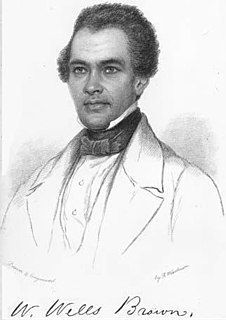
William Wells Brown was a prominent abolitionist lecturer, novelist, playwright, and historian in the United States. Born into slavery in Montgomery County, Kentucky, near the town of Mount Sterling, Brown escaped to Ohio in 1834 at the age of 19. He settled in Boston, Massachusetts, where he worked for abolitionist causes and became a prolific writer. While working for abolition, Brown also supported causes including: temperance, women's suffrage, pacifism, prison reform, and an anti-tobacco movement. His novel Clotel (1853), considered the first novel written by an African American, was published in London, England, where he resided at the time; it was later published in the United States.
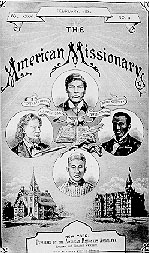
The American Missionary Association (AMA) was a Protestant-based abolitionist group founded on September 3, 1846, in Albany, New York. The main purpose of the organization was abolition of slavery, education of African Americans, promotion of racial equality, and spreading Christian values. Its members and leaders were of both races; The Association was chiefly sponsored by the Congregationalist churches in New England. Starting in 1861, it opened camps in the South for former slaves. It played a major role during the Reconstruction Era in promoting education for blacks in the South by establishing numerous schools and colleges, as well as paying for teachers.
The Genius of Universal Emancipation was an abolitionist newspaper founded by Benjamin Lundy in 1821, in Mount Pleasant, Ohio.
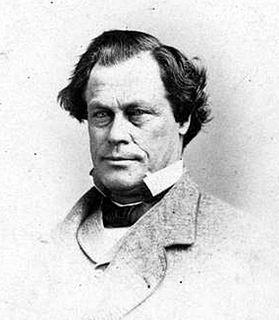
Owen Lovejoy was an American lawyer, Congregational minister, abolitionist, and Republican congressman from Illinois. He was also a "conductor" on the Underground Railroad. After his brother Elijah Lovejoy was murdered in November 1837 by pro-slavery forces, Owen, a friend of Abraham Lincoln, became a leader of abolitionists in Illinois, condemning slavery and assisting runaway slaves in escaping to freedom.
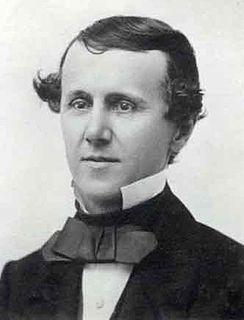
Winthrop Sargent Gilman was head of the banking house of Gilman, Son & Co. in New York City. Born and raised in Ohio, he had parents and ancestors from New England. Part of the family had already established the banking business in New York. Gilman developed as a businessman in the northwest region with wide interests.
The Liberty Party was a minor political party in the United States in the 1840s. The party was an early advocate of the abolitionist cause and it broke away from the American Anti-Slavery Society (AASS) to advocate the view that the Constitution was an anti-slavery document. William Lloyd Garrison, leader of the AASS, held the contrary view, that the Constitution should be condemned as an evil pro-slavery document. The party included abolitionists who were willing to work within electoral politics to try to influence people to support their goals. By contrast, the radical Garrison opposed voting and working within the system. Many Liberty Party members joined the anti-slavery Free Soil Party in 1848 and eventually helped establish the Republican Party in the 1850s.
Lowell is an unincorporated community in LaSalle County, Illinois, United States. Lowell is located on Illinois Route 178, 4 miles (6.4 km) southeast of Oglesby. The town was laid out around 1830 by William Seeley. It once thrived due its location on the Peoria-Chicago Stagecoach Route, the waterpower of the Vermilion River and the coal outcroppings along the river bluffs. It developed several stores and taverns, a mill and a brick factory and a railroad spur that connected to the Burlington Railroad. Its most famous resident was Benjamin Lundy, a fiery Quaker abolitionist who came to Illinois to be the successor of Elijah Lovejoy, recently murdered for his anti-slavery beliefs. Lundy published the paper, Genius of Universal Emancipation from Lowell. The town declined and today offers river rafting.
The Emancipator (1833–1850) of New York City was an American abolitionist newspaper. It was the official newspaper of the American Anti-Slavery Society (AAS). From 1840 to 1850 it was published by the Liberty Party and changed names several times as it merged with other abolitionist newspapers in Boston.

The Alton Observer (1837) was an abolitionist newspaper established in Alton, Illinois, by the journalist and newspaper editor Elijah Lovejoy after he was forced to flee St. Louis, Missouri. Lovejoy left St. Louis, where he edited the St. Louis Observer, after his printing press was destroyed for the third time.

The Elijah P. Lovejoy Monument, also known as the Elijah Lovejoy Monument, Elijah Parrish Lovejoy Shaft, Lovejoy Monument, and Lovejoy State Memorial, is a memorial in Alton, Illinois, to advocate of the abolition of slavery and free speech, Elijah P. Lovejoy.

This timeline of events leading to the American Civil War is a chronologically ordered list of events and issues that historians recognize as origins and causes of the American Civil War. These events are roughly divided into two periods: the first encompasses the gradual build-up over many decades of the numerous social, economic, and political issues that ultimately contributed to the war's outbreak, and the second encompasses the five-month span following the election of Abraham Lincoln as President of the United States in 1860 and culminating in the capture of Fort Sumter in April 1861.

The lynching of Francis McIntosh was the killing of a free man of color, a boatman, by a white mob after he was arrested in St. Louis, Missouri, on April 28, 1836. He had fatally stabbed one policeman and injured a second.

In the United States, abolitionism, the movement that sought to end slavery in the country, was active from the late colonial era until the American Civil War, the end of which brought about the abolition of American slavery through the Thirteenth Amendment to the United States Constitution.
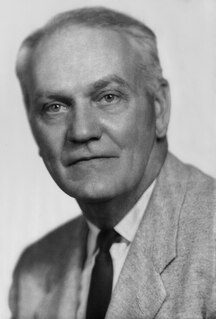
John Glanville Gill was an American Unitarian minister, scholar in history, and civil rights activist. While working on research for his dissertation about Elijah Parish Lovejoy, an editor and abolitionist, he lived and worked in Alton, Illinois in the mid-1940s. There he worked with other ministers to try to integrate public schools, raise awareness about racial discrimination, and end segregation practices.
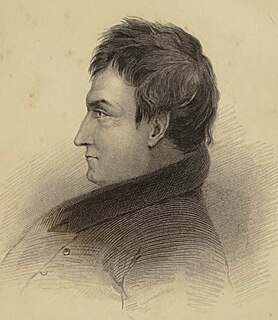
David Nelson was an American Presbyterian minister, physician, and antislavery activist who founded Marion College and served as its first president. Marion College, a Protestant manual labor college, was the first institution of higher learning chartered in the state of Missouri. Born in Tennessee, Dr. Nelson had once been a slaveholder but became an "incandescent" abolitionist after hearing a speech by Theodore D. Weld. Unpopular with proslavery groups in northeastern Missouri, Nelson stepped down as president of Marion College in 1835. In 1836, Nelson fled Missouri for Quincy, Illinois, after slaveowner Dr. John Bosely was stabbed at one of his sermons. Nelson then remained in Quincy, where he founded the Mission Institute to educate young missionaries. Openly abolitionist, two Mission Institute sites became well known stations on the Underground Railroad, helping African Americans escape to Canada to be free from slavery.














